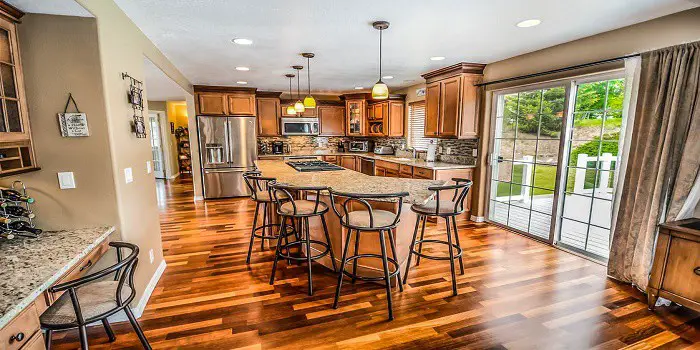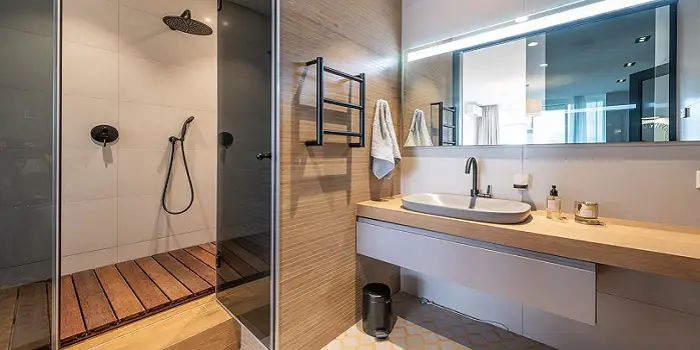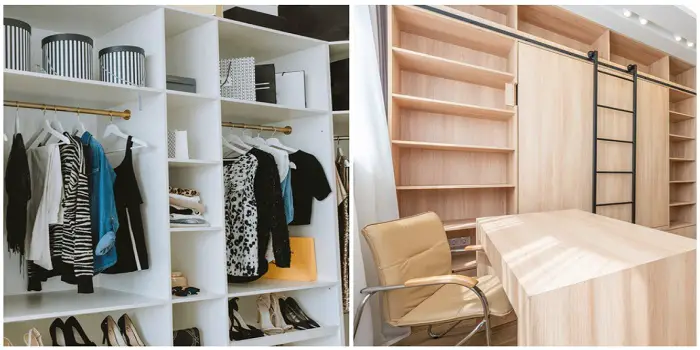
Usually called names like medium density fiberboards, and particleboards are both commonly found in the construction of homes and furniture because they offer benefits in terms of density and uniformity at a relatively low price.
It may seem that both fiberboards and particleboards are identical in nature, but there are some important differences between these compressed wood.
When it comes to choosing the right material for your closet shelves, understanding the differences between fiberboards and particleboards is quite important.
Which one you choose should be based on what you value the most from either product.
MDF vs. Particle-board: Difference
| MDF | Particleboard | |
|---|---|---|
| Appearance: | Smooth finish with same size wood grains | Not smooth and looks like glued sawdust – because of wood shavings and chips |
| Density: | Higher density level | Lesser density level |
| Strength: | Fairly stronger | Not very strong |
| Weight: | Heavier than particle boards | Lightweight |
| Moisture: | More resistance to water | Less resistance to water |
| Price: | Costlier than particle boards | Less expensive |
| Durability & Lifespan: | Quite durable – can last up to 10 years | Relatively less durable – has a shorter life span compared to MDF |
What is MDF?
Fiberboards or MDF (medium-density fibreboard) are engineered woods made by breaking down softwoods into fibers and combining them with wax along with a binder made of resin.
The mixture is then formed into panels using pressure and high temperatures. The result is a wood product that can be used in a manner similar to plywood.
However, the MDF is considerably denser compared to standard particleboards.
The advantages of MDG start with its smooth surface that is uniform. This smooth surface comes into play when the MDF is cut with a saw.
The result is a smooth cut that does have the jagged edge common with other types of boards.
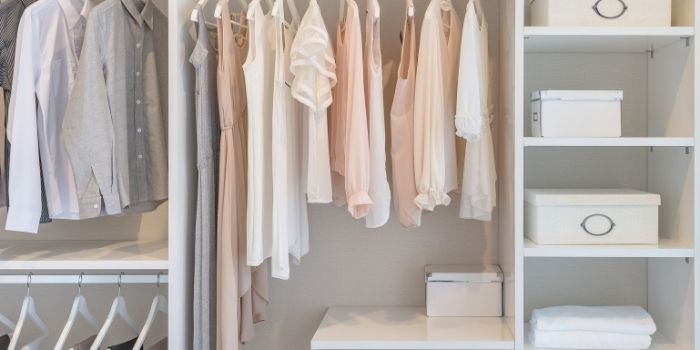
You can apply a coat of primer and paint which will stick well to the surface and create an attractive MDF appearance that is generally superior compared to other types of composite woods.
MDF is resistant to warping or swelling in environments that are high in humidity.
This means that using MDF in bathroom cabinets offers an advantage since they will not warp or change shape when in the presence of moisture.
You can find MDF used in decorative molding, shelving, doors, laminate flooring, and furniture thanks to its many fine qualities.
This includes the insulation provided from both sound and heat.
When putting together projects with MDF, you have a wide choice of fastening applications that include nails, screws, glue, staples, and more. This makes MDF as versatile as plank wood.
MDF is popular with those who are concerned about the environment since it is made from scrape wood.
This means that no trees are cut down to be made into MDF, but rather the fiberboard is crafted from the scraps of wood used for other applications.
It can also be difficult to spot MDF because it has a laminate or veneer covering which disguises it quite well, especially along the edges.
One issue with MDF is the presence of formaldehyde which comes from the resin.
This means when working with the fiberboard it is recommended that you wear a mask and use a vacuum to pull away from the dust.
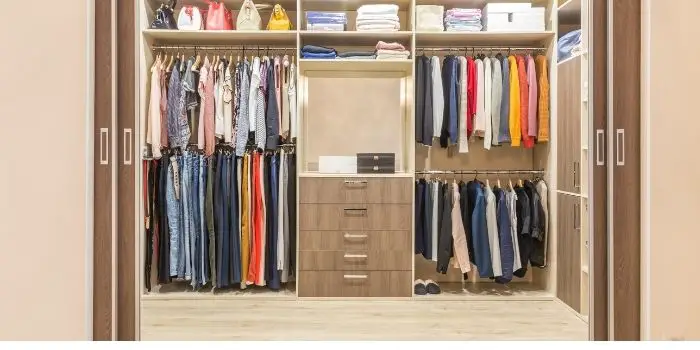
What is Particleboard?
This is an engineered wood that is made from particles that include chips, shavings, and even sawdust.
A synthetic resin binds the particles together to make the wood which is then pressed and extruded for added strength.
This makes particleboard a type of fiberboard, but the most noticeable difference is the larger pieces of wood used in its creation.
This makes particleboard instantly identifiable compared to MDF or fiberboard which is crafted from much smaller particles.
Particleboard is more uniform and denser compared to plywood and is often substituted for that product thanks to its low cost.
This is especially true when durability and its appearance are not that important as plywood is stronger and looks better overall.
However, particleboard can be painted or have wood veneers glued to the surface for a more pleasing appearance.
It is recommended that you paint or seal particleboard if it will be exposed to moisture. Otherwise, it will tend to expand and discolor under such conditions.
This is why particle board is rarely used outdoors or near areas of high humidity such as kitchens and bathrooms unless it is protected by sealant or paint.
For closet shelves, particleboard will be adequate assuming that the closet is not exposed to high amounts of moisture.
However, fiberboard is not only better suited but will also last a long time making it preferable.
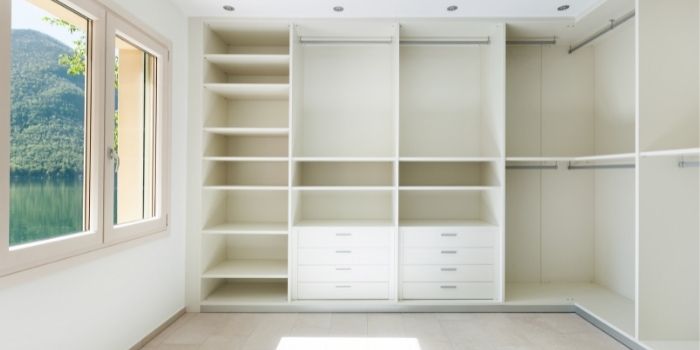
What about Plywood and OSB?
Oriental Strand Board (OSB) has a similar origin as particle board or MDF as it is made up of a large part of wood shavings.
However, OSB has layers that are cross-oriented. OSB does make for a strong flooring solution thanks to its inherent strength.
The OSB itself is put together using adhesives and then placed under pressure at high temperatures.
Standard plywood is created by stacking three or more layers of thin wood together.
The thin layers are called veneers and when put together create a much stronger board that can be used in a wide variety of situations.
One difference between OSB and plywood is that plywood must be painted or sealed for protection.
While OSB does not need such protection thanks to the adhesives used to put the elements together.
OSB is generally denser, comes in larger sizes compared to plywood, is crafted from pliable materials, and often costs less which makes it a great choice for many types of projects which include the manufacturing of furniture.
On the downside, OSB is also difficult to get paint to stick, is quite heavy, and is not waterproof which means that it may warp or have the edges swell which can disrupt its shape.
Final Thoughts
It pays to know the different types of compressed wood boards, their alternate types that are available, and what you can use to make your project come to life.
Especially for closets and cupboards understanding what fiberboard and particleboard do, how it is made, and what are their characteristics will go a long way towards choosing the right one for your project.
Compared to medium-density fibreboards (that come with a smooth finish due to wood grains of the same size), particle-boards have a lesser density level, are less expensive, and are not as smooth because of the wood shavings and chips they contain.
So, based on the budget and project requirements choose the product that suits you most.
Share the post "Fiberboard vs. Particleboard: What’s Better for My Closet?"

Hi, I am Mark Garner a professional carpenter, woodworker, and DIY painter. I live in the small city of Peoria, Arizona as a semi-retired woodworker. I have started this blog with a simple motive to help you with my wood experience in this sector. If you like to know more about what I love doing and how it all got started, you can check more about me here.


